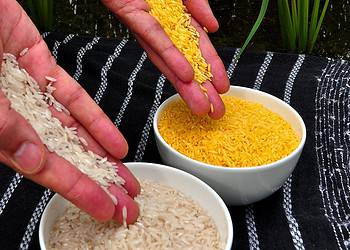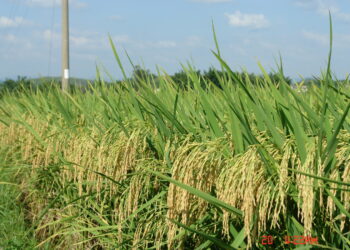I know, the title sounds like one of those scams that promise you’ll lose weight – but this is all science all the way. Researchers in Sri Lanka have found a simple way of cooking the rice that not only reduces calories by half, but also provides other health benefits. The key addition is coconut oil.

Rice is not only the fuel that powers millions of students around the world (alongside instant noodles), it’s a staple in numerous cuisines around the world. But as cheap and delicious as it is, there’s one major problem associated with rice – it’s not good for you. It’s not that it’s necessarily bad for you, but rice has many calories – according to Science Alert, one cup of cooked rice contains around 240 starchy calories – nasty carbohydrates that can quickly turn to fat if you don’t burn them off.
According to the researchers, all you need to do is add some coconut oil in the water you boil the rice in – some 3% of the rice quantity. So if you want to boil half a kg of rice (about 1 pound), all you need to do is add 15 grams of coconut oil (about one teaspoon).
Undergrad student Sudhair James conducted the research with his supervisor and presented the results at the National Meeting and Exposition of the American Chemical Society on Monday.
“After it was ready, we let it cool in the refrigerator for about 12 hours. That’s it,” James told Roberto A. Ferdman from The Washington Post. To eat it, you simply pop it in the microwave and, voila, you have a “fluffy white rice” that’s significantly better for you.
The process is extremely simply to make, but it actually involves some pretty interesting biochemistry. Rice contains a lot of starch; there are actually two main starches (polysaccharides): amylose and amylopectin. Amylose has a branched out structure and therefore has more surface area, which makes it easily digestible. But on the other hand, amylopectin is harder to digest; it passes through the large intestine, where they act like a fiber and provide numerous benefits. Most of the starchy foods contain these hard to digest starch, but when you cook them, they usually turn into more digestible versions of starch.

Sudhair wanted to investigate this issue and see how rice can be cooked so that it maintains the more healthy starch; he and his supervisor cooked it in 38 different ways, and they obtained the best results with coconut oil. A previous study also showed that letting pasta cool down before reheating it increased the content of resistant starch content, so they also tried that.
“Cooling for 12 hours will lead to formation of hydrogen bonds between the amylose molecules outside the rice grains which also turns it into a resistant starch,” explained James in a press release. And he notes that heating the rice back up afterwards doesn’t change the resistant starch levels.
If their results are confirmed by other studies, this might lead to a new generation of packaged rice – pre-cooked in coconut oil and then cooled down. But this might have even bigger implications – could this technique be applied to other foods? Could all our favorite starchy foods (like french fries or bread) become healthier? Could other substances (potentially cheaper and more accessible) be used instead of coconut oil? Those are the hot questions right now.
“It’s about more than rice,” Thavarajah said. “I mean, can we do the same thing for bread? That’s the real question here.”
As a rice fan, this is extremely exciting – and it could bring with it a major health and dietary revolution. I’m really looking forward to it.






